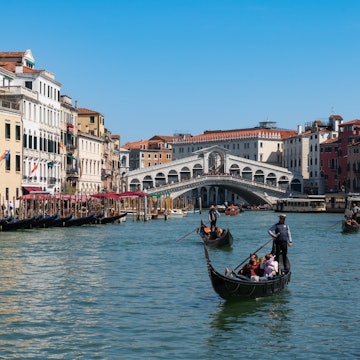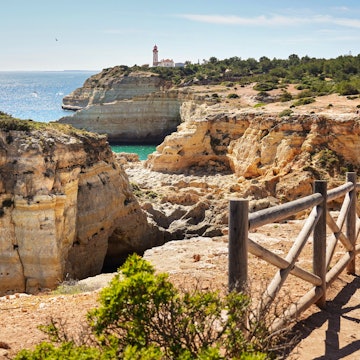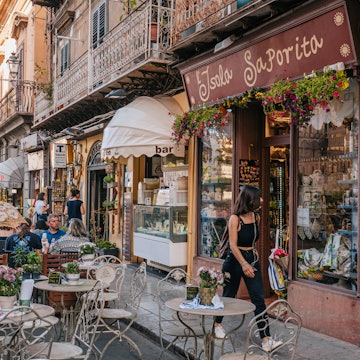

These are the best ways to stretch your wallet in Portugal. Kerry Murray for Lonely Planet
A decade ago, Portugal was one of Europe’s most inexpensive countries for a sunny city break or beach vacation. In recent years, prices and visitor numbers have steadily risen, yet overall it remains an incredibly good value destination – especially if you venture beyond Lisbon, Porto and the Algarve.
Fresh seafood and quality wines are a bargain away from the most popular beachfronts; low-season accommodation deals can be a steal; and enjoying all the pretty villages and spectacular, cliff-backed shorelines doesn’t cost a cent. Plan your visit wisely, and you can still experience the best of Portugal on a budget.
Skip the high season for savings on more than accommodation
Although accommodations are drastically cheaper in the off-season everywhere, Portugal’s seasonal popularity can mean extreme price fluctuations. Visit the Algarve in still-sunny October, and you could save up to 75% on a summer school holiday hotel. Likewise, in some cities, the (ever-increasing) tourist taxes are discounted or waived in the low season.
But it’s not just school holidays; annual festivals, such as June's Festas dos Santos Populares in Lisbon and Porto, drive up demand and prices. Avoiding peak periods will also save on a car hire and perhaps parking costs, which some resort towns stop charging in winter, while lower demand means half-price train or bus tickets are easier to secure.
Free festivals are more than just value for money
Bigger summer events aside, planning a visit around Portugal’s year-round local festivals and celebrations will let you experience Portugal at its atmospheric best. There’s no ticket needed to appreciate Aveiro's colorful Carnaval (countywide in February or March), Coimbra's student-celebrating Queima das Fitas in May, and Albufeira’s big New Year’s Eve beach bash, to mention just a few.
Search for fair-priced flights to all three airports
Mainland Portugal’s three international airports – Lisbon, Porto and Faro – are all linked with European and North American cities. Airfares can vary significantly between the three, so it’s worth searching for substantial savings as travel between regions is fairly fast and affordable.
Buses connect Lisbon with Porto in around three and a half hours (from €5; US$5.70), while the fastest train connects Porto to Faro in six hours (from €35.50; US$40). Inexpensive public transport tickets (metro in Lisbon and Porto, bus in Faro) link airports with downtown.

Build an itinerary that blends big hitters, offbeat spots, and natural attractions
The easiest way to get bang for your buck in Portugal is to plan more time in less costly, locally loved destinations. Swap Sintra’s pricy palaces for the Palacio Nacional de Mafra, detour from Douro’s wineries to the criminally underrated Dão region, or trade the Algarve’s resorts for the central Silver Coast. There are swoon-worthy beaches, pass-free nature parks and excellent hiking trails nationwide.
Choose guesthouses and hostels instead of an apartment
Portugal’s rising costs aren’t just bad news for budget travelers; they have been a disaster for locals who are being pushed and priced out of their local communities. The main driver is the conversion of apartments to short-term rentals. If you’re only on a quick break and don’t require a kitchen (eating out is inexpensive), help reverse the overtourism tide and opt for a hostel or family-run guesthouse – it’s often cheaper than an Airbnb.
Portugal’s hostel scene is excellent. You’ll find some of Europe’s best-value and highest-quality dorms in Porto and Lisbon. Prefer a private room? Look for simple, sometimes old-fashioned hotels suitable for a just-for-sleeping stop around Arroios in Lisbon, or outside the old towns of Faro or Portimão in the Algarve.

Trade breakfast buffets and self-catering for snack bars and bakeries
Forgo the fancy hotel buffet – breakfast in Portugal is very budget-friendly. A galão (latte), tosta mista (grilled cheese and ham sandwich) and pastel de nata (custard tart) rarely cost more than €5 (US$5.70) in a snack bar. Some chains, such as A Padaria Portuguesa, offer combos for even less. Cheaper still are the boxes of end-of-day leftover baked treats available on Too Good to Go.
Select car rental collection times and driving routes carefully
Getting around Portugal’s main cities and towns is easy and affordable by public transport, but you’ll need a car for scenic road trips. Save money by visiting in winter when a car hire can be as low as €5 (US$5.70) a day, or by using an off-airport supplier, as the shuttle bus inconvenience will save the mandatory airport rental fee (around €15; US$17).
Rentals are for 24-hour periods, not daily, so carefully select pick-up and drop-off times to shave a day’s costs. Take scenic detours to avoid toll roads and refuel at (usually slightly cheaper) supermarket gas stations.

Book rail and long-distance buses at least five days ahead
All long-distance trains and buses offer discounted advance tickets. Online train bookings open 60 days ahead, with discounts expiring eight (65%) or five (50%) days in advance. Rede Expresso bus network is similar, with promo seats usually offered until the back few rows are filled.
When booking trains, compare the fastest AP (Alfa Pendular) and the second-fastest IC (Intercidades) tickets; sometimes the fare discount offsets the slightly longer journey. Prices for regional trains, including the Algarve line and to the Douro, don’t have discounts for advanced bookings, making DIY day trips relatively affordable. If you plan to do a lot of trips in a short period, a tourist rail card will save you money; otherwise, stick with single tickets.
When you’re all walked out, opt for a travel pass (but not always the tourist one)
Walking is the best way to explore any Portuguese city, even with the hills. Still, travel cards are always cheaper than single tickets when you want to hop on a metro, tram or bus. Most regions have a tourist pass, but the local rechargeable cards – Navegante in Lisbon, Andante in Porto, or the Algarve-wide Vamus App (not a card) – provide the best prices.
Secure popular attraction tickets in advance and consider alternative cultural spaces
Pre-booking tickets to Parques de Sintra three days ahead scores a 15% discount. The Algarve’s waterpark also offers advanced online savings.
It’s also worth booking tickets to popular museums and monuments like Jerónimos Monastery and Belém Tower ahead, though there are no savings. In fact, January 2025 saw entry to national monuments increase significantly, some doubling. For a cheaper cultural outing, visit local municipal museums (usually free or a couple of euros) and swap sightseeing at the usually paid-entry Sé (main cathedral) for smaller churches.
Seek attraction savings before buying a city card
Lisbon and Porto offer one to three-day tourism cards, which include public transport, free entry to certain attractions and discounts on other sights. Porto’s is cheaper and a good investment, while Lisbon’s has become better value since the national monuments’ price hike. Still, it’s worth doing the math to check that it will save you money before buying.
Carry cash and don’t get caught by high ATM fees
Many smaller restaurants and shops in Portugal don’t accept international cards. This has resulted in a proliferation of White Label ATMs in tourist areas nationwide, often charging additional withdrawal fees alongside poor exchange rates. Find an official bank ATM for better rates.
Purchase pottery and ceramics by weight
Portugal is famed for its gorgeous azulejos (hand-painted tiles) and pretty pottery, and chances are you’ll want a ceramic souvenir. For a one-off piece, head to an artisanal boutique. But if you fancy a whole new dinner set, find one of the many stores retailing pottery by weight.

Trade rooftop cocktails for miradouro cervejas
Swap Lisbon and Porto’s chic rooftop bars for a cheaper, local, BYO-style skyline experience at a miradouro (elevated viewpoint). Some have little kiosks selling refreshments, but it's common for friends to bring cervejas (beers) or a bottle of wine to enjoy the sunset. Porto’s Miradouro do Jardim do Morro and the gardens below Lisbon’s Miradouro da Graça are two of the best.
Head to one of the plentiful picnic spots
Picnics in Portugal are a pastime, not just a money saver, and you’ll find parque de merendas (picnic parks) countrywide, with seating tables and sometimes even stone BBQs. Head to a local mercado or mercearia to craft a typical Portuguese picnic of bread, chouriço (cured sausage), cheeses, and a bottle of vinho for under €10 (US$11.50).
Dine at a churrasqueira or tasca serving a menu do dia
Family-run tascas are usually the best bet for a fair-priced, hearty lunch. Many offer a prato do dia (dish of the day) or a more complete menu do dia (set menu of the day) for around €12 (US$13.65). At most churrasqueiras (grill restaurants), you can usually find a filling half portion of piri-piri chicken for even less.
Check the price of couvert and order house wine
On arrival, restaurants usually serve bread, olives, and sometimes cheese or pate, collectively known as couvert. If eaten, these items will be added to the check (individually or as a combo), but it’s fine to decline them. It’s not a scam, but a customary part of dining out and an affordable appetizer, though check prices as touristy restaurants can overcharge. Water is always served in bottles unless requested otherwise. The best value wine is usually a jarro (carafe) of the vinho de casa – in rural areas, the difference between the two can be negligible.
Daily costs
High season, hostel dorm in Bonfim, Porto: from €20 (US$23)
Guesthouse bedroom (shared bathroom) in Arroios, Lisbon: from €40 (US$45)
Tent pitch at Ilha de Tavira’s campsite: from €10 (US$11.50)
Single ticket for Lisbon's metro with a navegante card: €1.66 (US$1.90)
Advanced high-speed rail ticket from Lisbon to Porto: €21 (US$24)
One-way ferry ticket to the Ria Formosa’s Islands: €2.30 (US$2.60)
A bica (espresso) in a local cafe €0.85-1 (US$~1)
Pastel de nata from Pastéis de Belém: €1.50 (US$1.70)
A caneca (large beer) in Bairro Alto: €2.50 (US$2.85)
Ticket for Palácio Nacional da Pena: €20 (US$22.70)
Entrance to a local cultural site, like the Roman ruins of Milreu: from €2 (US$2.25)
A francesinha (typical meat-stuffed sandwich) at A Regaleira in Porto: €11 (US$12.50)
Freshly grilled fish at a beachfront restaurant: €15-25 (US$17-29)
Where to eat in Portugal on a budget
Pastelaria Coelho, Faro
This all-day snack bar serves tostas (toasted sandwiches), a reliable lunch menu do dia, and excellent petiscos (sharing plates) and bitoques (steak topped with an egg) at fair prices.
Churrasqueira da Paz, Lisbon
Near Palácio de São Bento, this simple, cash-only churrasqueira grills golden bream (dourada), piri-piri chicken, and steaks to perfection. Most pratos do dia are under €10 (US$11.50).
Cafetaria do Museu da Ciência, Coimbra
Enjoy an excellent value lunch when exploring Coimbra’s expansive historic university at this cafe, where a quality, three-course buffet (including wine and coffee) will leave you change from a tenner.
Tasquinha Dos Guindais, Porto
Get your freshly-grilled sardine fill at this low-key spot on one of Porto's steep staircases. You’ll pay €2 (US$2.25) a pop for each sardinha assada and even less for a glass of wine.
















